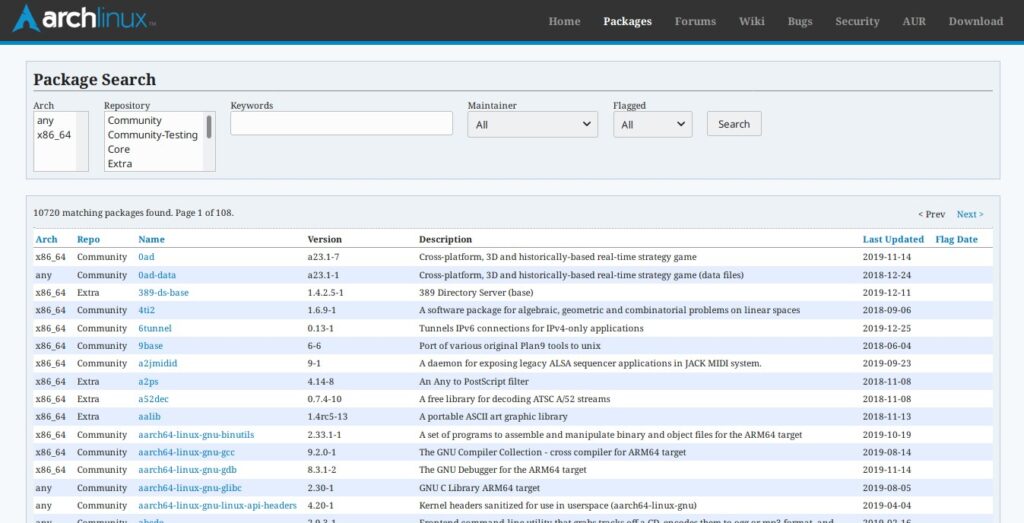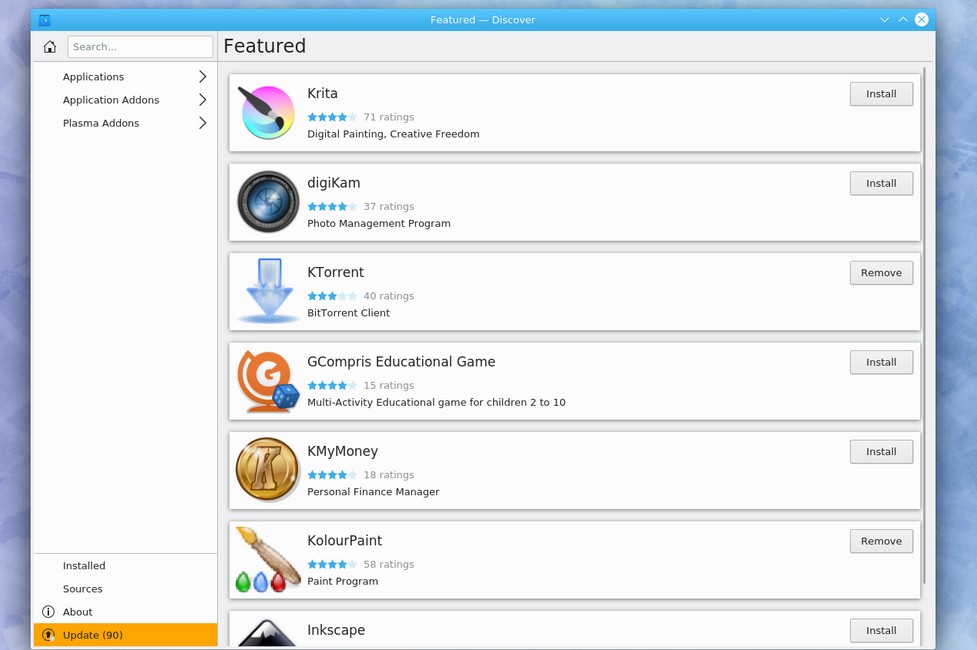Fedora and Arch are two of the most popular Linux distros. Fedora is officially sponsored by one of the largest software development companies i.e. Red Hat Inc and used by the founder of the Linux OS i.e. Linus Torvalds. The OS was first released in 2003. Arch was introduced in 2002 by Aaron Griffin and few other developers. Both OS follow the rolling release model wherein the user will get updates whenever they’re available.
Installation ease
Fedora is easy to install as it provides a GUI based installer and partition manager. Unless you’re an expert, you’ll have to refer a manual to install Arch, create partitions, etc. Once you install the OS, you can install the software, desktop manager, and desktop environment of your choice. If you’re using Fedora, you don’t have to do this as the OS will install every application that ships with the desktop environment.
To install the OS, you must write its official ISO files to an external DVD with Fedora MediaWriter or similar software. The ISO file of the Arch Linux is of 639 megabytes size. The Fedora 31 OS’s ISO file is 1.8GB in size.
Updates
Both Fedora and Arch Linux are rolling releases. However, a stable version of Fedora (with a new kernel) is released every 6 months. The current edition of the OS is 31. In Arch, updates to Linux Kernel will be available as soon as the kernel is marked outdated. It is a “true rolling release”.
Fedora
Unless you do something stupid that crashes a utility or the OS, the OS will work like a charm. Also, the new updates to the OS are thoroughly tested by the Fedora community before it is officially rolled out for the users.
Arch Linux
Arch Linux is a great Linux distro. I’ve been using it for 8 months without any major issues. Sometimes, some features you use often might stop working after an update. For example, a day before yesterday, I updated the NetworkManager tool to the latest version before switching off my laptop. In the morning when I switched on the laptop to resume my work, the OS failed to detect the USB 4G dongle connected to the laptop. It displayed “IP Configuration is unavailable” message each time I disconnected/reconnected the dongle. After some time, I found that the dhcpcd utility was removed from the laptop during the update process. Re-installing the DHCPCD service and enabling it to run during system startup fixed my problem.
Software

Arch Linux repository has several applications. You can install the applications with a utility called “pacman”. The OS also supports third-party apps. Unlike Fedora that requires you to add a software repository manually, Arch gives users access to a repository called “AUR” where the user will find several apps. To install the software, you must install a package helper such as Yay, Pikaur, etc. Yay is a helper based on the Go programming language. Pikaur is based on python. The packages you’ll find in the AUR repos are uploaded and maintained by third party users. You can see their pkgbuild before installing the app.

Fedora’s software library gives you access to several apps. However, several apps are missing from the library. For example, you won’t find popular software such as Apache Netbeans, Spotify, DBeaver in the Fedora software library. To install the software and make sure that you can update it without re-downloading/installing the software again from the developer’s website, you should add the repository of the software. You can install the applications and manage the repos with a GUI software called Discover.
Boot time
I’ve installed the same software I use on Fedora in Arch. My laptop has an AMD quad-core processor and 8GB RAM. For some reason, Fedora takes 30 to 50 seconds to open the login screen. Arch, on the other hand, displays the login interface within 10 to 20 seconds once I select it from the GRUB menu.
Graphics Drivers
Both operating systems let users install graphics drivers and play games. Arch lets you install and use graphics drivers for legacy GPUs. I’ve no idea whether the same driver software is available for the Fedora OS or not.
Which OS you can choose for the server?
As Fedora is easy to install and thoroughly tested before a new version is rolled out, it is a great OS for servers.
Which OS is better for desktops?
Although Arch Linux is difficult to install, it is the best Linux distro. If you’re switching from Windows OS to Linux and you’ve heard great things about Fedora as well as Arch, you should go with Fedora if you don’t want to play with the Linux commands.
Which OS am I using?
I use Arch.
Final thoughts: Arch Linux is a great OS but installing it can be a nightmare for a newbie or someone who has never used the terminal before. Fedora is sponsored by a large corporation but it takes some time to boot to the log in screen and doesn’t have user updated repository such as AUR.


